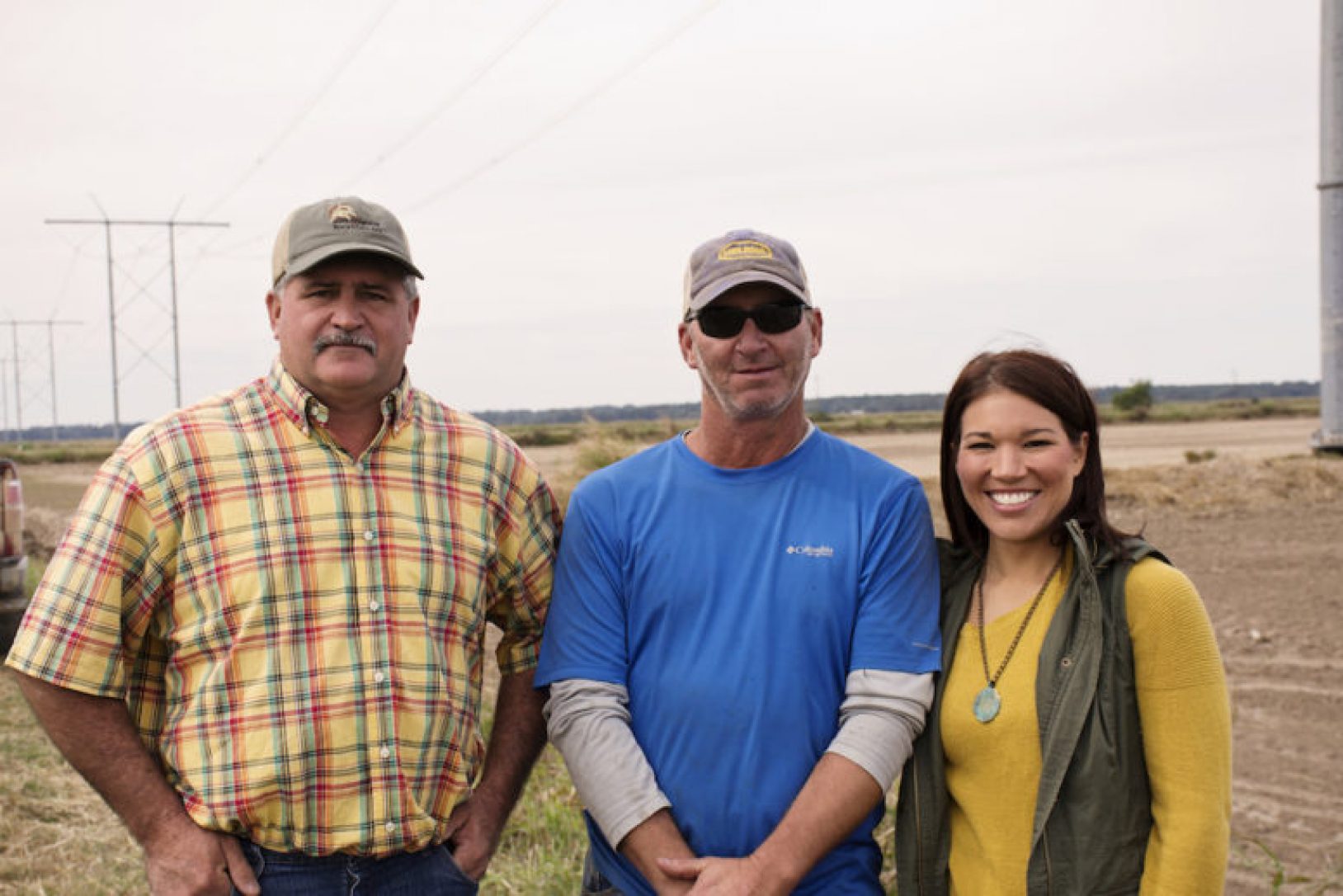By Justin Fritscher and Amy Robertson, Natural Resources Conservation Service
One of the continent’s rarest birds, the whooping crane, has found refuge not in some untouched reserve but right in the middle of farms. Rice and crawfish farmers in southwestern Louisiana are providing much-needed shallow water wetlands for the bird by simply putting water on fields earlier and holding water a little later.
Alan Hebert, Chad and Rae Hill, and Ted Fontenot use conservation practices recommend through USDA’s Natural Resources Conservation Service (NRCS) to create shallow water areas and make other conservation improvements to their working lands. To the naked eye, the farms look like a sea of rice reeds and shallow water. But they’re stocked full of plants and micro-organisms. For the whooping crane, these wetlands are the Ritz Carlton of habitats.
Using technical and financial assistance through the Conservation Stewardship Program (CSP), a Farm Bill conservation program, farmers are planning and implementing conservation activities that help their operations while providing other benefits, such as dynamite whooping crane habitat. CSP is providing the financial incentive for farmers to create shallow wetlands that hold water on the land when many other farmers drain their fields.
“We are a business and have to be profitable, so the programs that we utilize with NRCS help us incorporate conservation practices,” Alan said. “It’s important to us because we love this land and want to leave it to our children better than we found it.”
Last year, neighbors celebrated the birth of LW1-16. She was the first whooping crane in nearly eight decades to be born in the wild in Louisiana. She just made her first birthday on April 11, 2017. Her family, L6-12 and L8-13, found sanctuary on Chad and Rae’s farm as well as the other farms in the area.
“When we found out we had a nest, it was exciting,” Rae said. “We had whooping cranes on our property before but, we have never had a nest with babies. We feel honored that we have been able to experience this with our children and the fact that this is the first nest and chicks that have hatched in Louisiana in such a long time and it happened on our land, is really remarkable.”
Whooping cranes have come a long way! Habitat loss and illegal hunting nearly caused them to vanish. In 1941, fewer than two dozen remained. Through a concerted effort by the U.S. Fish and Wildlife Service, Louisiana Department of Wildlife and Fisheries (LDWF), NRCS and many other groups, the crane’s population is rebounding. Now, they’re 600-plus. LDWF is working to establish a resident population in the state.
“Cooperation and support of private land owners and farmers has been essential and is critical to the long term success of the reintroduction of whooping cranes to Louisiana,” said Sara Zimorski, a wildlife biologist with LDWF.
An important piece of that effort is habitat restoration on private lands. With more than 70 percent of the continental U.S. under private ownership, the work of these farmers is critical.
As Troy Mallach, NRCS state biologist in Louisiana puts it: “Private landowners are so important to the recovery of endangered species. Without them, the fact of the matter is we are not going to be able to recover many species, including the whooping crane.”
“This is really a great success story of how NRCS working with farmers to help these species and many others find a place to call home,” he said.

